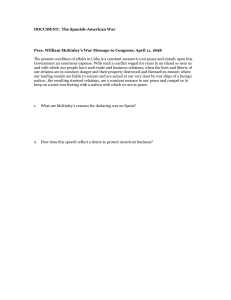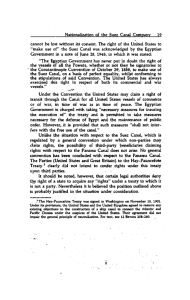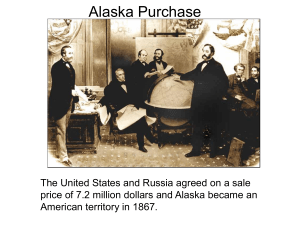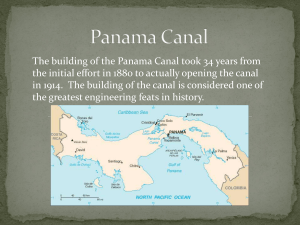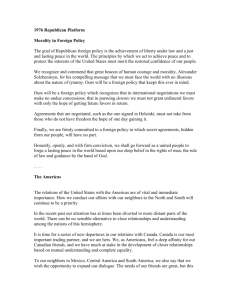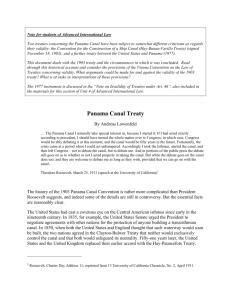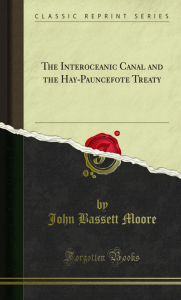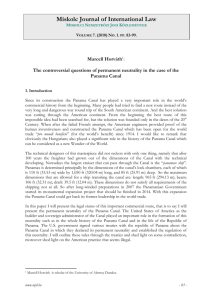expansion in latin america
advertisement
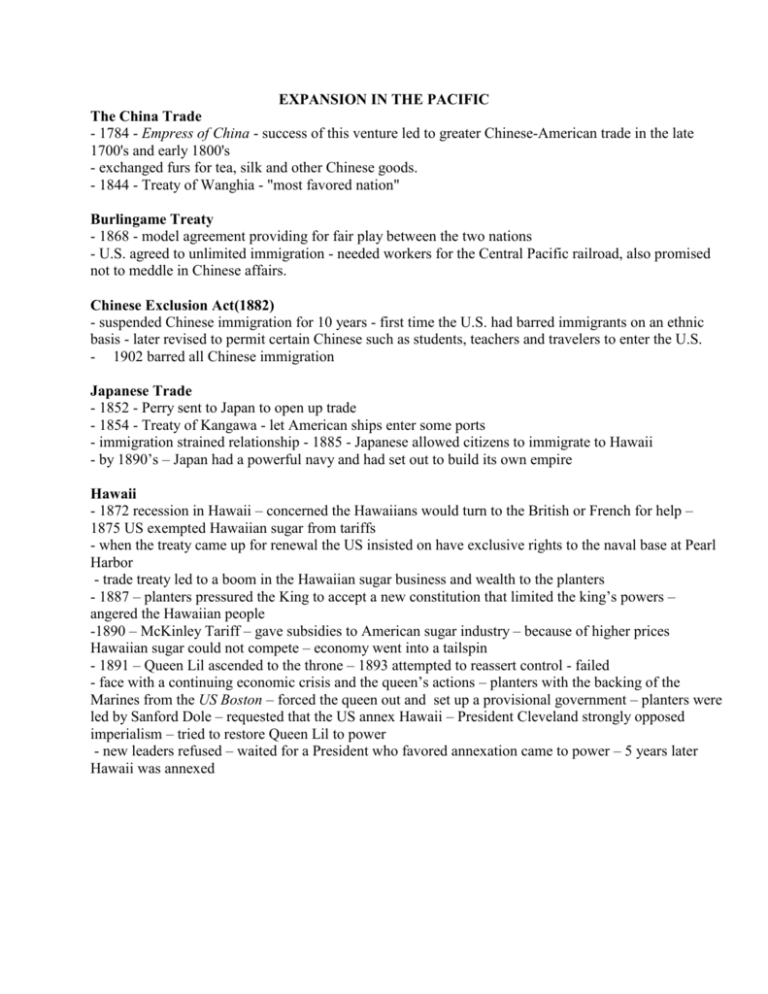
EXPANSION IN THE PACIFIC The China Trade - 1784 - Empress of China - success of this venture led to greater Chinese-American trade in the late 1700's and early 1800's - exchanged furs for tea, silk and other Chinese goods. - 1844 - Treaty of Wanghia - "most favored nation" Burlingame Treaty - 1868 - model agreement providing for fair play between the two nations - U.S. agreed to unlimited immigration - needed workers for the Central Pacific railroad, also promised not to meddle in Chinese affairs. Chinese Exclusion Act(1882) - suspended Chinese immigration for 10 years - first time the U.S. had barred immigrants on an ethnic basis - later revised to permit certain Chinese such as students, teachers and travelers to enter the U.S. - 1902 barred all Chinese immigration Japanese Trade - 1852 - Perry sent to Japan to open up trade - 1854 - Treaty of Kangawa - let American ships enter some ports - immigration strained relationship - 1885 - Japanese allowed citizens to immigrate to Hawaii - by 1890’s – Japan had a powerful navy and had set out to build its own empire Hawaii - 1872 recession in Hawaii – concerned the Hawaiians would turn to the British or French for help – 1875 US exempted Hawaiian sugar from tariffs - when the treaty came up for renewal the US insisted on have exclusive rights to the naval base at Pearl Harbor - trade treaty led to a boom in the Hawaiian sugar business and wealth to the planters - 1887 – planters pressured the King to accept a new constitution that limited the king’s powers – angered the Hawaiian people -1890 – McKinley Tariff – gave subsidies to American sugar industry – because of higher prices Hawaiian sugar could not compete – economy went into a tailspin - 1891 – Queen Lil ascended to the throne – 1893 attempted to reassert control - failed - face with a continuing economic crisis and the queen’s actions – planters with the backing of the Marines from the US Boston – forced the queen out and set up a provisional government – planters were led by Sanford Dole – requested that the US annex Hawaii – President Cleveland strongly opposed imperialism – tried to restore Queen Lil to power - new leaders refused – waited for a President who favored annexation came to power – 5 years later Hawaii was annexed EXPANSION IN LATIN AMERICA Political Background - Spanish Colonies - Distinct Social Classes - 1) People born is Spain 2) Creoles - children of Spaniards born in colonies - Spain gave its colonies little experience in self-rule - ill prepared to manage own affairs - caudillos seized power - 1838 - United Provinces of Central America - political union between Costa Rica, Guatemala, Nicaragua, Honduras & El Salvador - fell apart - Honduras - 20 Presidents between 1862 & 1872 - 5 Salvadoran Presidents deposed by force - 2 others executed ECONOMIC BACKGROUND - few wealthy families controlled all the usable farm land - produce rather than the land taxed - once a tenant farmer fell into debt, by law the debtor was required to remain on the estate and work until the debt was paid - became virtual slaves to the landowners - concentrated on producing food and raw materials - when Europe and US industrialized they provided a ready overseas market - foreign investors poured in ? - improve transportation, provide public utilities and modernize mines - foreign managers and technicians to run mines and factories - profits did not improve the standard of living - rich grew richer - poor grew poorer WILLIAM WALKER - southern journalist - was an American filibuster - military adventurer - 1853 - gathered a company of soldiers and tried to conquer lower California and the state of Sonora - both in Mexico - arrested by the US for violating Neutrality laws - 1855 led successful revolution in Granada, Nicaragua - reinstituted slavery and tried to get Nicaragua admitted as a state to the Union - canceled transit concession held by Cornelius Vanderbilt - Vanderbilt gave his support to Central American Forces which ousted Walker - saved by the U.S. navy - supposedly Buchanan pardoned him of violating neutrality laws - tried to reassert himself in Central America - captured in Honduras and executed in 1860 MINOR COOPER KEITH - went to Costa Rica to help his brother build a RR from the Caribbean to the capital, San Jose - didn't complete the RR to 1890 - but 1873 started a steamship line to carry bananas to the U.S. - because his rail line didn't produce many travelers - he grew bananas along it - his United Fruit joined with the Boston Fruit - today controls 60% of foreign currency earnings in Panama - 1912 - International Railways of Central America - largest employer in Central America - substantial power over governments GEORGE LAW & WILLIAM ASPINWELL - rights granted by Colombia - RR begun in 1850 - finished 1855 - $8 million - 6X beyond estimate - took 3 hours to travel - 1st transcontinental railroad - most expensive line on earth - $25 in gold one way ticket - Pacific Mail and Steamship Co. founded by Aspinwell - Panama Railroad Co. CORNELIUS VANDERBILT - wanted a piece of their action - build a canal across Nicaragua - Walker resisted his enterprise - force Walker out - canal scheme collapsed in tangle mess CLAYTON-BULWER TREATY - U.S. and G.B. saw the need for a canal - promised any canal in Central America would be politically neutral - grew unpopular and was replaced by the Hay-Pauncefote Treaty PANAMA CANAL - 1878 - Colombia granted French adventurer Lucien Napolean Bonaparte Wyse the rights to the canal - sold it to Ferdinand de Lessep - directed the construction of the Suez Canal - bought control of Panama RR for $20 million - began digging in 1882 - by 1886 the problems of building a sea level canal forced the need for locks - went bankrupt in 1889 - new company formed - New Panama Canal Company - Oregon - U.S. battleship - needed to strength Atlantic fleet - 68 days around South America - 13,000 miles - 4,600 if through a canal

